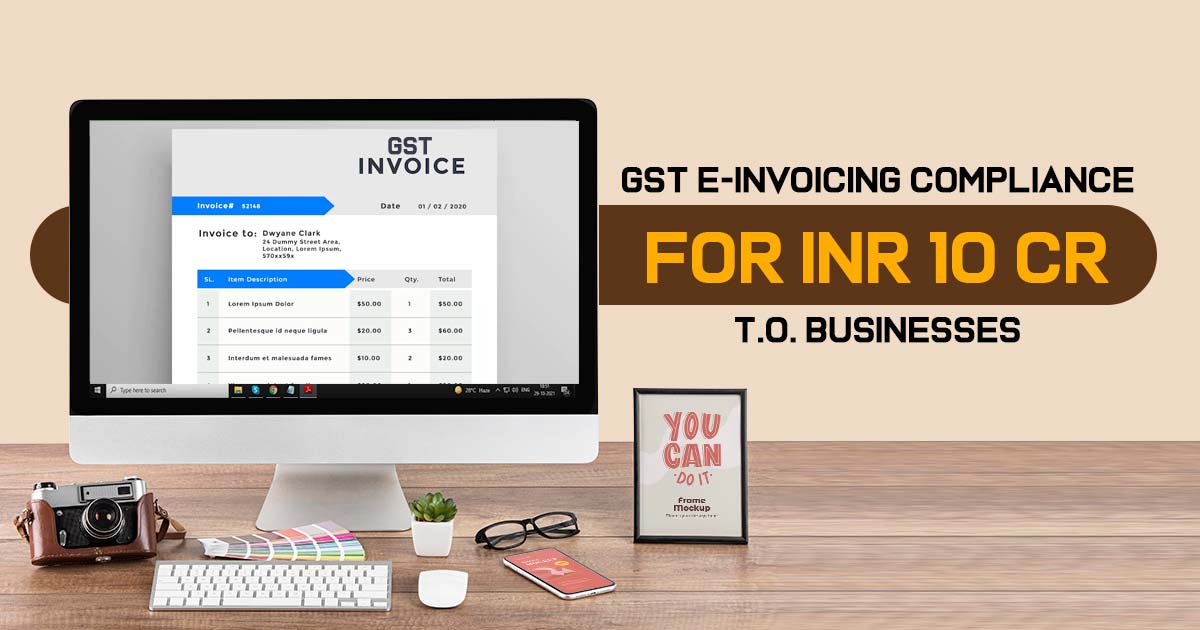
GST e-invoice compliance: Wef October 1 the e-invoicing for businesses with an aggregate turnover of Rs 10 cr or more, under the goods and services tax, or GST regime would become essential. The government has reduced the limit from Rs 20 cr at the current time in a bid to manage the revenue leakage and to ensure effective tax compliance from the businesses.
Enforcing from the 1stday of October 2022, for the words “twenty crore rupees”, the words “ten crore rupees” would be replaced, as mentioned in the announcement circulated by the Central Board of Indirect Taxes and Customs (CBIC) in the notification date August 1. On the grounds of the recommendations, the rules would be reported by the GST officials.
Impact of the Move on Business?
As per the experts, the announcements incurred by the Central Board of Indirect Taxes and Customs (CBIC) towards the essential GST e-invoice for the businesses would furnish surety about the effective tax compliance and would be the step to make it mandate to all assessees.
“The reduction of the e-invoicing to a threshold to Rs.10 crore will further expand the GST tax base and provide more data to the tax authorities enabling better compliance. The progressive reduction of the e-invoicing threshold indicates that, over a period of time, e-invoicing will become mandatory for all categories of GST taxpayers” the tax expert mentioned.
The decision ensures that small vendors who are tightly following the same mandate shall not lose the GST Input Tax credit.
To reduce the GST bogus actives and rectify the compliance the government has lowered the limit for the e-invoice. It indeed directed that the bigger firms would be required to assure that their small vendors would follow the same mandate so that they do not finish losing the input credits.
“The Deloitte GST Survey@5 showed that 90 per cent of the CXOs interviewed, stated GST implementation was a welcome step. It is only natural that the tax administration will now aim to cover the wider economy under GST. Hence this step of reducing the mandatory E invoicing requirement from Rs 20 crore to Rs 10 crore, will be welcomed by the industry,” said the tax expert.
The 45th GST council meeting considered the requirement for the revenue surge and the best path is taken through the policy measures instead of administrative interruptions. Indeed we see additional tax policy measures like that that will rise revenue along with that it draws certainty to the GST law.
GST: CBIC reduces Mandatory E-Invoice for Businesses having Rs. 20 Cr Turnover to Rs. 10 Cr. The Central Board of Indirect Taxes and Customs ( CBIC ) directed, mandatory E-invoicing for businesses with an aggregate turnover of more than Rs 10 crore starting from October 1. Presently, e-invoice is compulsory for businesses with an annual turnover of over Rs 20 crores.
Before that, in March the committee provides the utility for the registration and login to the assessee with the turnover of Rs 20 to 50 cr and reported that the lessening in the applicability of GST E-invoicing limit set to 20 Crores from Rs.50 Crores with effect from April 1, 2022.
E-invoicing provides the facility for the exchange of the invoice document (structured invoice data) between the supplier and the purchaser in an integrated electronic format through the method of standard e-invoice schema (INV-01) via looping the government authorities i.e invoicing the portal to monitor the bogus assessee.
“In the said notification, in the first paragraph, with effect from the 1st day of October, 2022, for the words “twenty crore rupees”, the words “ten crore rupees” shall be substituted.”